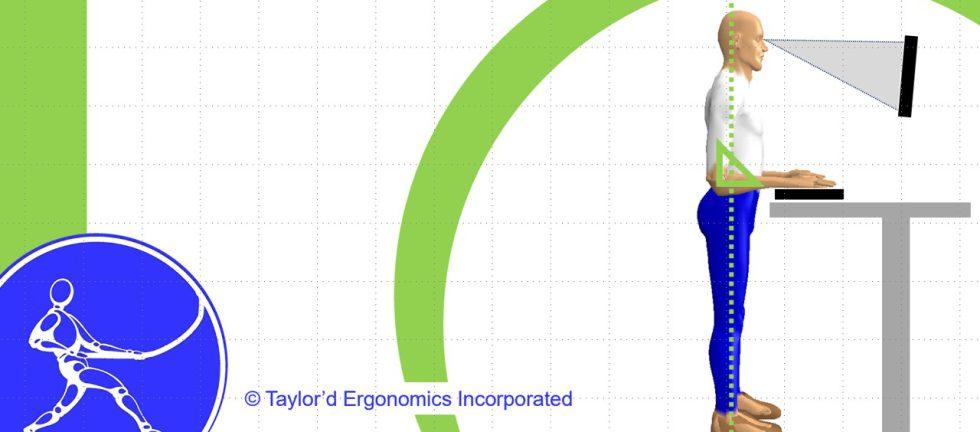An office worker, who we’ll call Janet, submitted a doctor’s note to her employer, suggesting that a sit/stand workstation was “required”. The employer, concerned about setting a precedent, requested an ergonomics assessment for the employee. Sound familiar?
The first step in our office assessment process is a pre-assessment survey. Janet’s pre-assessment survey reported a very clear “need” for a sit/stand desk, which the ergonomist acknowledged. She asked Janet to be patient as they followed the assessment process. The ergonomist observed the employee at work, photographed the working postures, and measured workstation and employee anthropometrics (key body dimensions). The ergonomist noticed that the chair was not well-adjusted, but it had good features.
The ergonomist walked Janet through the adjustment process, raising the lumbar support, ensuring appropriate foot support by lowering the seat pan, and adjusting the keyboard and screen to ideal positions. Janet was shocked that her existing furniture could be made so comfortable! She had tried to adjust her chair but had not been able to find a setting that felt right.
The ergonomist encouraged Janet to trial the new furniture settings for a couple of weeks before deciding whether to proceed with the sit/stand station. She also explained the process for implementing a sit/stand station: the employee must wear supportive footwear, and must commit to a gradually increasing regimen of frequent alternating sitting and standing. Janet had not considered the footwear change, and confessed that she might not be ready to give up her heels and “cute shoes”.
The ergonomist also encouraged Janet to find opportunities to stand more during the day – for meetings, phone calls, etc.. She provided Janet with a tracking form so she could document her pre- and post-shift comfort scores, along with how much time she spent standing each day. This proess allows the employee, ergonomist, and employer to understand whether standing will have any impact on comfort, in the long run.
In the end, Janet’s discomfort resolved gradually after a week with the new settings. She sent us a follow up survey thanking the ergonomist for the careful, thoughtful assessment. (We thought a thank you note from her preferred shoe store might also be in order!)
Why didn’t we simply recommend the sit/stand that Janet wanted, and her doctor said she needed?
We do promote the selection of sit/stand desks for new installations, since they provide the option to alleviate prolonged sitting demands. In today’s office world, moving at work is the exception, not the norm. Sit/stand desks offer other advantages as well:
- “Desk” surface to the immediate left and right of your keyboard offers a spot to put coffee, notes, or your phone. (When using a keyboard tray, you must reach for these items.)
- With a sit/stand desk, you might be able to set your screen right on the surface, at the appropriate height; when you raise or lower your desk, the monitors adjust appropriately. When we use keyboard trays or bi-level worksurfaces, the screens sometimes won’t adjust low enough, and we need to use more costly monitor arms to get them lower.
- If you choose a “standard” sit/stand with a good height range and sufficient depth, it should accommodate everyone, thereby avoiding the need to custom-fit for every new hire or internal move. Panel-hung worksurfaces are wonderfully, but not easily, adjustable.
Recently, the price for sit/stand desks has come down so much that they can be less expensive than a good keyboard tray, footrest and monitor arm. However, most employers still need to be cautious in setting a precedent if they are not prepared to replace all of their furniture. And many employees are quick to request a sit/stand without fully exploring what will be required of them to make it work. Taking the time to adjust the existing furniture is the diligent thing to do. And remember, even with a sit/stand desk, the employee will be sitting for more than half the day, so adjusting that chair is still very important!
Not all cases turn out like this one. Sitting for too long, even in a well-adjusted chair, can prevent back pain from healing. But at least we know, at the end of this process, whether the investment is warranted.


